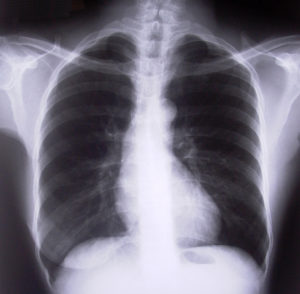
Did you know the second leading cause of lung cancer is radon! It could be lurking in your house. It is actually the number one cause if you do not smoke so that puts it at the top of my list. According to the EPA (Environmental Protection Agency), radon is a naturally occurring radioactive gas which is released in rock, soil and water and takes approximately 20,000 lives annually in the U.S. It can build up in your home, whether it is new construction or old. No home is immune to the potential of radon gas exposure. Radon is colorless and odorless, so the only way to know if you have it creeping around your home is to test for it. You can check Consumer Reports for the quality of the different available test kits but in general, they run around $25.00 and long term kits are recommended (they take 90 days). They measure how many picoCuries per liter are in the air (named after French scientists Marie and Pierre Curie). A picoCurie is one trillionth of a curie and if you are interested, a curie equals the radioactivity of one gram of radium. If you find the results to be between 2 and 4 the EPA recommends remediation. The cost of remediation can run close to $2,500.00 but it’s worth it to stay healthy! You really need to test your own home even if your neighbor doesn’t have high levels because radon levels vary greatly.
Morris County is in Radon Zone 1 (the highest potential) and Essex County falls in Zone 2 (moderate potential). There are 3 zones total. Being in Zone 1 indicates the average is greater than 4.0 pCi/L. The national average is only 1.3.
You might be asking why doesn’t the building code take care of this. Well as a matter of fact it does! New Jersey Administrative Code Title 5 Community Affairs Chapter 23 Uniform Construction Code Sub Chapter 10 Radon Hazard Subcode has got you covered. If you look at Appendix 10-A you will find all the municipalities listed as Tier 1. Tier 1 is the threshold for communities required to conform to the code requirements. Also the EPA recommends the RRNC (Radon Resistant New Construction) as a guide. The items addressed in the code are briefly as follows;
Provide a continuous 6 mil. Vapor barrier with 12” overlapped seams under your basement or crawlspace concrete slabs. Under the vapor barrier should be a minimum depth of 4” crushed stone. If you have an interior pipe drain you are required to install a minimum of 3” diameter vent that pipes to the exterior. If you do not have an interior pipe drain you are required to have one 3” minimum solid vent with a “T” fitting placed in sub-slab aggregate. The vertical pipe is required to be run to the exterior.
All joints between slab and foundation walls are to be filled with non-cracking polyurethane or similar calk.
Many people have sump pits and these need to have a cover.
At the top of your foundation, the contractor is required to fill all voids in hollow masonry wall cavities. This is just a general guideline of items required.
As of today, Parsippany is not listed as Tier 1, which requires the above-referenced techniques. However surrounding areas such as Morristown, Morris Plains, Randolph and Roxbury are considered Tier 1. All of Essex County is exempt from these requirements, but it is still a smart practice to put your mind at ease and get your home tested!


